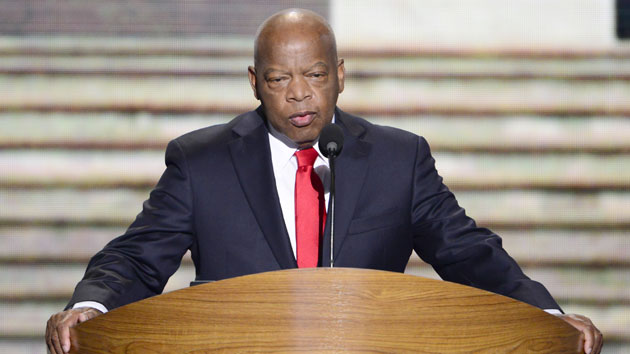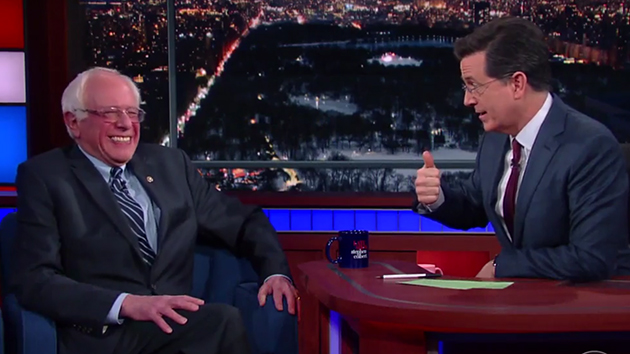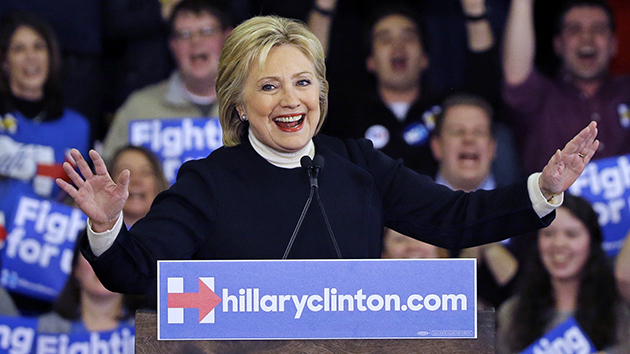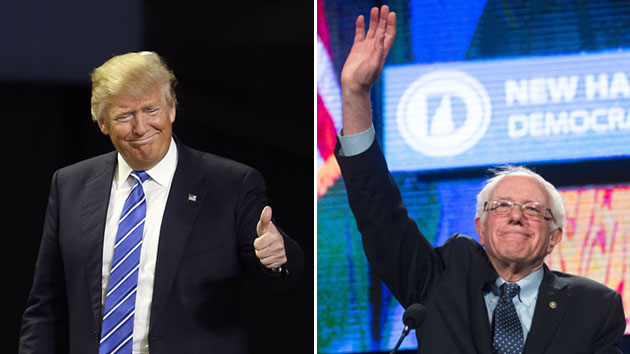
<a href="https://www.flickr.com/photos/tiffany98101/20443202111/in/photolist-x9uKKV-zmM64S-zmM7bS-yGkQFs-yjZ5X9-srs7h1-i9YUCA-idbS6Z-zS5fiL-idcuUM-DuLAPo-i8dwQm-AUGPna-AvFT6Y-BiDPPU-BqUFhL-BqUFgU-AvNtJx-BqUNnh-BkV8gz-BtdHs8-AUGWjg-BtdHqe-B26rQ1-BkV8fH-AUGWoe-AUGPkg-AUGPix-B26qPo-BiDPHS-BiDH3N-AvPrfT-BqUNnY-AvNmMg-AUHTQr-B25rgC-BqUNj1-AvFT4J-AvFT3m-DqwgDN-DNerUD-x7QRe9-xq3dqB-x7QRPE-xpsdyp-x7QTbA-DK7CkV-CxhxGA-CxhVxE-DstruY">Tiffany von Arnim</a>/Flickr
Civil rights icon John Lewis told reporters that he never encountered Bernie Sanders when the Vermont senator was working with Lewis’ Student Nonviolent Coordinating Committee in the 1960s. Because he made his remarks at a press conference announcing the Congressional Black Caucus PAC’s endorsement of Sanders’ opponent, Hillary Clinton, Lewis’ comments can be seen as a mild dig at Sanders. (In the same breath he said he had met Bill and Hillary Clinton.)
But it’s also undoubtedly true.
The Georgia congressman was a titan of the civil rights movement. A participant in the Freedom Rides organized by the Congress of Racial Equality (CORE), he went on to lead the Student Nonviolent Coordinating Committee (SNCC) and still bears the scars he received at Selma. Sanders’ involvement was, by comparison, brief and localized, his sacrifices limited to one arrest for protesting and a bad GPA from neglecting his studies. But Sanders was, in his own right, an active participant in the movement during his three years at the University of Chicago.
Although Sanders did attend the 1963 March on Washington, at which Lewis spoke, most of his work was in and around Hyde Park, where he became involved with the campus chapter of CORE shortly after transferring from Brooklyn College in 1961. During Sanders’ first year in Chicago, a group of apartment-hunting white and black students had discovered that off-campus buildings owned by the university were refusing to rent to black students, in violation of the school’s policies. CORE organized a 15-day sit-in at the administration building, which Sanders helped lead. (James Farmer, who co-founded CORE and had been a Freedom Rider with Lewis, came to the University of Chicago that winter to praise the activists’ work.) The protest ended when George Beadle, the university’s president, agreed to form a commission to study the school’s housing policies.
Sanders was one of two students from CORE appointed to the commission, which included the neighborhood’s alderman and state representative, in addition to members of the administration. But not long afterward, Sanders blew up at the administration, accusing Beadle of reneging on his promise and refusing to answer questions from students on its integration plan. In an open letter in the student newspaper, the Chicago Maroon, Sanders vented about the double-cross:
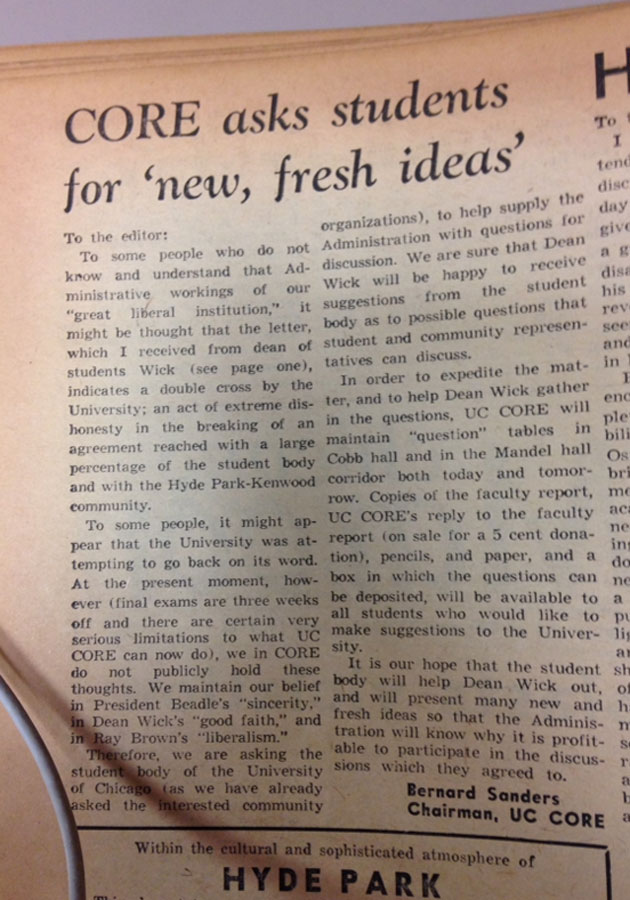
That spring, with Sanders as its chairman, the university chapter of CORE merged with the university chapter of SNCC. Sanders announced plans to take the fight to the city of Chicago, and in the fall of 1962 he followed through, organizing picketers at a Howard Johnson in Cicero. Sanders told the Chicago Maroon, the student newspaper, that he wanted to keep the pressure on the restaurant chain after the arrest of 12 CORE demonstrators in North Carolina for trying to eat at a Howard Johnson there:
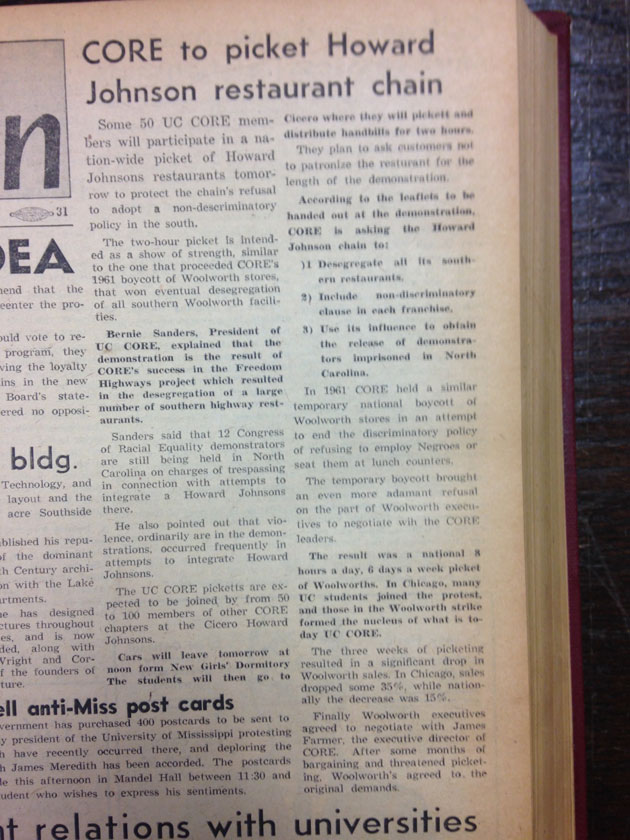
Sanders left his leadership role at the organization not long afterward; his grades suffered so much from his activism that a dean asked him to take some time off from school. (He didn’t take much interest in his studies, anyway.) But he continued his activism with CORE and SNCC. In August of 1963, not long after returning to Chicago from the March on Washington, Sanders was charged with resisting arrest after protesting segregation at a school on the city’s South Side. He was later fined $25, according to the Chicago Tribune:
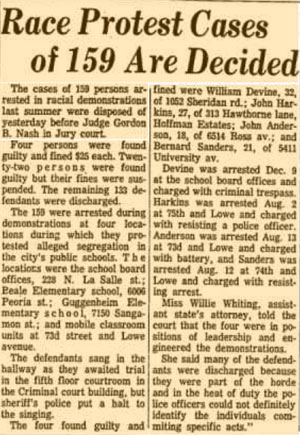
Chicago Tribune

